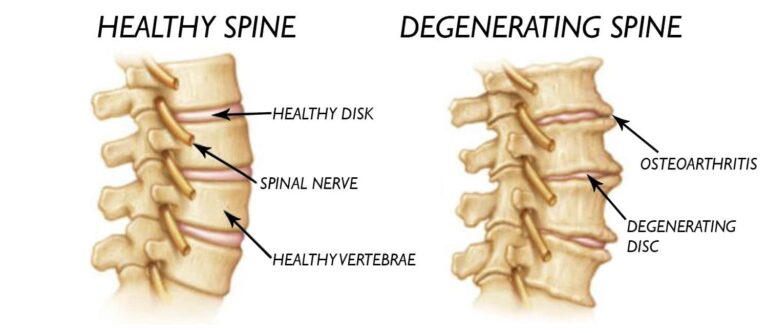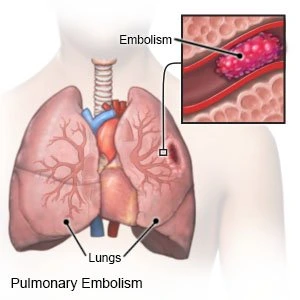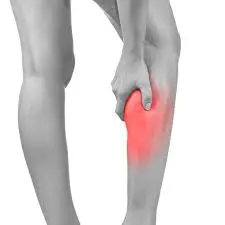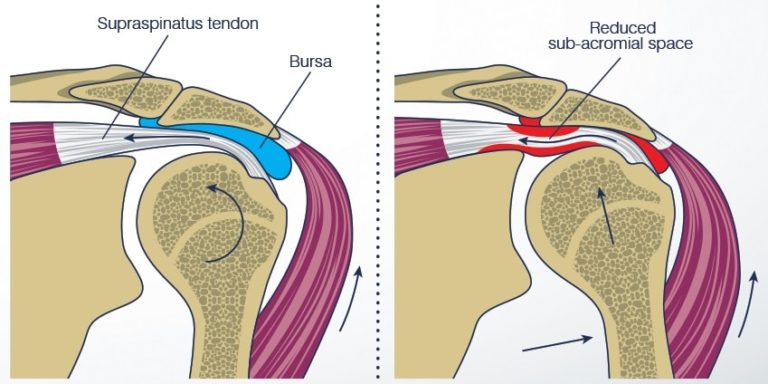Lower Abdominal Gas Pain
What is a Lower Abdominal Gas Pain?
The digestion process produces gas in the intestines. It can also be caused by swallowing air while eating, eating incorrectly, or underlying medical disorders. When the body does not discharge enough gas, it causes lower abdominal gas Pain, and discomfort in other places.
Excessive gas is eliminated from the body through blowing and flatulence. Belching discharges gas from the stomach, whereas flatulence expels gas from the intestines. Gas pains can develop when the body creates too much gas or cannot discharge extra gas.
This article defines lower abdominal gas Pain and discusses its causes. It discusses the symptoms of gas discomfort as well as its diagnosis, treatment, and prevention.
Anatomy of the Abdomen
The abdomen is the region between your chest and pelvis known generally as your belly. Among other organs, it includes the stomach, liver, small intestine, large intestine, gallbladder, spleen, kidneys, diaphragm, and pancreas.
The fascia tissue layer covers the front of the belly, while the spine and back muscles cover the backside of the abdomen. The inferior vena cava and aorta, as well as their branches, are linked to the abdomen.
What is Abdominal pain?
Abdominal discomfort, often known as stomachache or stomach pain, can vary in intensity. It occurs between the chest and the pelvis and, depending on the source, can be perceived as either intense localized pain or dull intermittent discomfort.
In certain circumstances, discomfort in the abdomen can radiate to other portions of the body, such as the shoulders, scrotal region, and back.
What is Gas?
The air that builds up in a person’s digestive system is called intestinal gas. It usually consists of oxygen, nitrogen, and carbon dioxide from the air we breathe, as well as hydrogen and methane from food breakdown. When gas builds up in the body, it will try to expel it by discharge or farts.
People normally pass intestinal gas 5 to 15 times each day. However, medical professionals believe that passing intestinal gas up to 25 times each day is normal.
Intestinal gas is usually not uncomfortable. However, if extra gas cannot easily travel through the intestines, a person may develop stomach pain. The abdomen may enlarge as a result of this bloating feeling.
What is Abdominal Gas Pain?
Abdominal Gas Pain, another name for Bloating, is a rather frequent and annoying condition, in essence, it’s trapped gas in your digestive tract that causes lower abdominal pressure, cramps, and occasionally even acute pains.
Think of your stomach as a bubbling pot. Normally, these gas bubbles travel through your digestive system and are expelled safely when you cough or pass gas. However, occasionally the bubbles become stuck, which causes that uneasy bloating sensation.
Causes of the Lower Abdominal Gas Pain
Digestion produces gas as a by-product. it can also develop as a result of swallowing air when eating or drinking or moving to a high-fiber diet. Excess gas can also be caused by underlying medical issues.
Gas-producing eating and drinking habits
- While eating or drinking, everyone swallows a tiny amount of air. However, The following reasons can cause a person to swallow too much air:
- Gum chewing
- Consuming carbonated beverages
- Drinking or eating too rapidly
If stomach gas is not eliminated by bloating, it will migrate into the intestines and pass as flatulence.
Foods that might induce bloating
- Certain meals and beverages, particularly those high in fiber and FODMAPs, may trigger excessive gas production. “FODMAPs” is a short form for “fermentable oligosaccharides, disaccharides, monosaccharides, and polyols.”
- These are a group of short-chain carbohydrates that the small intestine may struggle to digest due to a lack of enzymes.
- Microorganisms can be found in the big intestine, which uses fermentation to break down indigestible meals. This technique generates gas.
Medical disorders
Certain medical disorders might cause an individual to create more gas or to have gas discomfort.
The following intestinal and stomach disorders induce these symptoms:
- Sensitivity to certain substances, such as lactose or gluten, causes constipation
- Gastroenteritis
- gastroesophageal reflux disease (GERD) colitis
- Blockage of the intestine
- Ileus is a condition in which normal small and large bowel function is slowed.
- Gastroparesis is a common consequence of diabetes mellitus.
- Crohn’s disease is a kind of IBD.
- IBS (irritable bowel syndrome) diverticulitis
The following reproductive organ conditions may induce these symptoms:
- Ectopic conception
- Pregnancy
- PMS (premenstrual syndrome) endometriosis menstrual pain
- Cancer of the ovaries
- Cysts in the ovaries
- PID (pelvic inflammatory disease)
- Other potential causes for symptoms like this include:
- Hernia appendicitis
- Medication for cystitis
- Cirrhosis-related intraabdominal tumors
- Drug sensitivity
- Allergies to foods
Symptoms of the Lower Abdominal Gas Pain
- The symptoms of gas might differ from individual to person. They are often characterized by Source belching, gas, and bloating. These symptoms are rather frequent, particularly during or after a meal.
- Gas symptoms are rarely distressing. Excessive intestinal gas that is unable to leave, on the other hand, might create acute sharp stabbing pain or a general sense of stomach discomfort.
- When gas builds up in the intestines, people may misinterpret the pain for a different cause. Gas that gathers on the left side of the colon, for example, may cause chest discomfort, whereas gas that collects on the right side of the colon may cause gallbladder pain.
- Additional symptoms such as constipation and diarrhea may occur in rare situations.
Diagnosis of the Lower Abdominal Gas Pain
- A doctor will evaluate a person’s medical history and do a physical exam to establish the source of gas and gas discomfort.
- A person’s symptoms, dietary habits, and existing medicines will most likely be discussed with the doctor.
- They can further ask that a person keep a food diary to identify any specific foods that may be causing flatulence.
- A doctor will examine the abdomen for symptoms of pain and any abnormalities during the physical exam. They may also listen to the region with a stethoscope.
- If a doctor feels that the gas discomfort is caused by an underlying health problem, he or she may prescribe additional diagnostic testing. These might include
- Stool testing.
- Blood examinations
- Imaging examinations
Treatment for the Lower Abdominal Gas Pain
Conservative Treatment
Gas discomfort can often be made less physically uncomfortable by vomiting or farts.
If a person has chronic and unpleasant gas symptoms, their doctor may advise them to make specific modifications. These are detailed further down.
Changes in eating and drinking habits
- A doctor may advise you to make modifications to your food and drinking habits.
- Possible recommendations for avoiding or limiting chewing gum
- limiting or avoiding carbonated beverage consumption
- Smaller and more frequent meals
- Consuming meals slowly and with seating
- Avoiding conversation when eating
Dietary managing
- If a person can identify foods that are difficult for their body to digest, they should avoid or limit their consumption of those items.
- The foods listed below are more likely to create excessive gas:
- Fruits include apples, peaches, and pears.
- cruciferous vegetables, such as broccoli, cauliflower, and kale legumes, such as beans, peas, and lentils.
- legumes (beans, peas, lentils).
- Dairy items include milk, ice cream, and yogurt.
- Fruit juices, soft drinks, and energy drinks prepared with whole grains and bran that include high fructose corn syrup.
- Confectionery, gum, and other products containing sorbitol.
Medications and Supplements
In rare circumstances, a doctor may offer drugs or supplements to assist in minimizing the symptoms of gas and discomfort.
The drugs prescribed by a doctor will differ based on the source of the symptoms. Over-the-counter medicines, such as ones containing simethicone, are one alternative.
- Prescription drugs are used to address medical illnesses that might induce gas symptoms.
- Probiotics, ginger, and peppermint oil are among the substances that may aid with gas issues.
- Products containing enzymes like lactase or alpha-galactosidase, can aid in the digestion of specific carbohydrates.
- Antibiotics might be prescribed by your doctor to treat bacterial gastroenteritis, colitis, or PID.
Surgical Treatment
- In certain circumstances, stomach discomfort may need to be effectively treated with surgery. This is typically required if you have long-term issues such as cholecystitis, aneurysms, or appendicitis.
- Your doctor may suggest one of two types of operations. Open or laparoscopic surgery may be necessary, depending on what is causing your abdominal pain.
- Intestinal obstruction can occasionally be treated with intravenous fluids, bowel rest, and a nasogastric tube, although surgery is sometimes required.
- Surgery is required to treat a burst appendix.
Home Remedies for the Lower Abdominal Gas Pain
- Bloating and lower stomach discomfort caused by digestive problems or menstruation will usually go away with time. You can reduce bloating and lower stomach discomfort caused by specific causes at home by doing the following:
- Exercising might help to expel trapped air and gas in the stomach.
- Constipation can be alleviated by increasing your fluid intake. Drink extra fluids.
- Take a walk or get some exercise.
- Get yourself a massage. Massage the sore area gently to encourage gas to travel lower and out of the body.
- Perform yoga positions.
- Take herbs. Consume apple cider vinegar.
- Heartburn and acid reflux can be treated with over-the-counter acid-reducing medicines.
- Mild over-the-counter pain medicines, such as ibuprofen, may help reduce stomach pain.
When should you see a doctor?
Consult your doctor if your gas or gas pains are so strong or chronic that they impair your ability to operate normally in everyday life.
Gas or gas pains that are accompanied by other signs or symptoms may be an indication of a more serious problem.
- Consult your doctor if you notice any of the following additional signs or symptoms:
- Stools that are bloody.
- Stool consistency has changed.
- Change in bowel movement frequency.
- Weight reduction.
- Diarrhea or constipation.
- Nausea or vomiting that is persistent or recurring.
If you experience any of the following symptoms, get emergency care:
- Abdominal pain that lasts a long time.
- Chest ache.
- Your lower stomach may feel uncomfortable as a result of a variety of diseases, including constipation or Crohn’s disease, as well as your diet and even stress. Treatment will be determined by the underlying reason.
- Abdominal bloating causes you to feel full in your stomach and might make your belly look bigger. Lower abdominal pain, often known as pelvic pain, is discomfort that occurs at or below the belly button.
- Pelvic organs, such as the bladder and reproductive systems, are frequently the source of pelvic discomfort.
Exercise(yoga Pose) to relieve Lower Abdominal Gas Pain
Knee to Chest(Apanasana)

How to Perform Knee to chest
- With your feet flat on the ground and your knees bent, lie on your back.
- Hugging them close, slowly draw your legs up to your chest. Your hands might be resting on your knees or encircling your shins or calves.
- Put pressure on your lower back and extend your spine on the mat.
- Breathe evenly and deeply, paying attention to how your breath fills your belly.
- As long as it feels comfortable, hold the stance for a duration of 30 to 60 seconds.
- Gently press your lower back into the mat while extending one leg at a time to release yourself.
Spinal twist
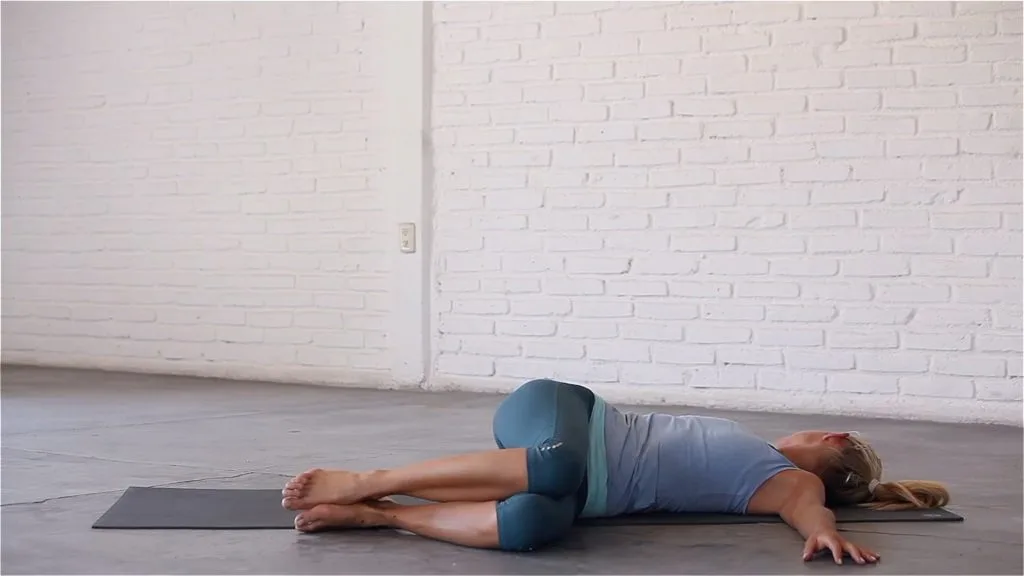
How to carry it out:
- Lay on your back with your legs bent and your feet flat on the base.
- With your palm pointing downward, extend your right arm out to the side.
- Lay your left foot flat on the mat outside of your right leg and hug your left knee as you cross it over your torso.
- To anchor the knee, reach your right hand under your left thigh and lightly press it down.
- With your palm facing down, extend your left arm outward down the mat parallel to your shoulder.
- Turn your head slightly to glance over your left shoulder.
- Hold the position for five to ten breaths while taking steady, deep breaths. Continue on the opposite side.
Briging

How to perform it
- With your feet flat on the ground and your knees bent, lie on your back.
- Keeping your knees bent, press your feet onto the floor and raise your hips off the floor.
- Elevate your hips farther until your torso forms a straight line from your shoulders to your knees.
- Lift your arms over your head and join your fingers.
- After five to ten breaths, hold the position, then gently drop your hips back to the floor.
One leg seated spinal twist

- With your legs out in front of you, take a seat on the floor.
- Your right foot should be flat on the floor outside of your left thigh, close to your groin, while you bend your right knee.
- Grasping your big toe with your thumb and index finger, wrap your left arm over your right foot.
- Take a breath, extend your right arm above, and then release the breath as you turn your body to the left, lowering your right elbow to land outside of your left knee.
- Glance over your left shoulder.
- Take five to ten deep breaths and hold the stance. Continue on the opposite side.
Foreward knee bending(Paschimottanasana)

How to perform forward knee bending
- Sit on the floor with your legs straight out in front of you to begin. Maintain a flexed foot position and apply pressure with your heels on the mat.
- Sitting upright with your shoulders relaxed and away from your ears, stretch your spine, and engage your core.
- Taking a breath, extend your arms overhead and extend them towards the ceiling.
- Hinging at the waist, softly fold forward from your hips as you release the breath. Aim to avoid rounding your shoulders and maintain a long back.
- If it is comfortable, extend your hands to your shins or toes and clasp them there. Don’t worry if you can’t reach your toes; just rest your hands comfortably wherever you can.
- Breathe slowly and evenly, stretching your spine with each breath out.
- For as long as you can easily retain the correct form, hold the posture for five to ten breaths.
- Take a deep breath, stretch your spine, and then carefully roll up each vertebra one at a time until you sit up straight.
Seating Heart Opening
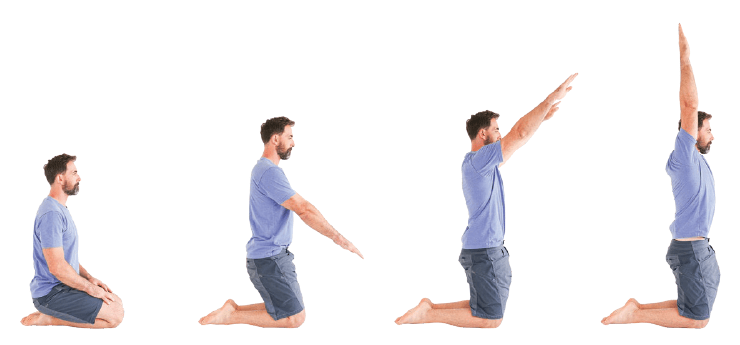
Your tummy will expand with this exercise, which may also help with cramps.
- With your fingertips pointing away from your body, place your palms eight inches behind you while seated on your heels and tilt your head back.
- Raise your chest, arch your back, and plant your hands firmly on the ground.
- Your hips need to be pressing on your heels. Bend your head back to lengthen the stretch.
- Your throat and chest should feel stretched. After five breaths of holding, sit up.
- This pose can also be performed while seated in a chair. Feel the strain as you raise your chest and arch your back.
Cat and Cow pose
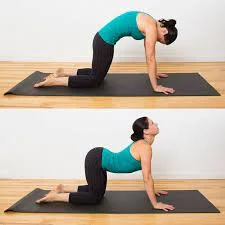
- Getting down on the base on your hands and knees.
Breathe in while maintaining a flat back and contracted abs. - For cat posture, release your breath, lower your head, and elongate your spine.
- For cow posture, take a deep breath and arch your back, raising your head and butt.
- Make a connection between your exhale in cat posture and your inhale in cow pose as you alternate between the two poses.
- Repeat numerous times.
Child’s Pose

- This is a fundamental stance for a relaxing stretch that is also called the resting pose.
- With your legs wide apart, take a seat on your knees and feet.
Extend your arms in front of you as you lean forward. - Then, plant your forehead on the ground while maintaining a straight back.
- For at least five breaths, hold this posture. To help you maintain the stance, place your head on a pillow or a block.
Downward Facing Dog

- Set your feet hip-width apart as you stand.
- Press your palms to the floor, bend forward, and maintain a straight back.
- For five to ten breaths, hold the posture.
- Switch up your child’s stance.
- To make it easier to maintain your back straight, you can also try doing this pose with your feet further back and your knees bent.
Forward Bending
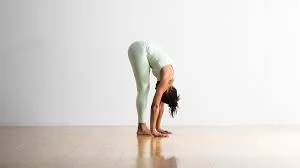
- Maintain this pose to ease stress in your neck and back and to strengthen your spine. Bending from the waist, stand with your legs apart.
- Lay your hands on the ground while maintaining an upright posture.
- Unable to get to the floor? To help you hold the pose, place your hands on a yoga block or piece of furniture.
Triangle Pose
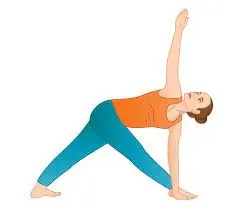
This pose will help you tone your belly and get a nice stretch and twist.
- Standing, turn your right foot towards the side of the mat and take a large stride back with it.
- Extend your arms.
- As you bend forward from the hip, maintain a long spine.
- Lower your left hand to the ground.
- Raise your right arm while maintaining a wide stance.
- Look, up to your right hand.
- Before you straighten up, turn to face your left foot to get out of the posture.
- Continue on the opposite side.
FAQs
How can you get rid of stomach aches?
Here are several simple methods for releasing trapped gas, such as throwing or passing gas.
Take a walk or get some exercise.
Get yourself a massage. Massage the sore area gently to encourage gas to travel lower and out of the body.
Perform yoga positions.
Drink extra fluids.
Attempt herbs.
Attempt baking soda.
Consume apple cider vinegar.
How long will the gas discomfort last?
While trapped gas might be uncomfortable, it normally goes away on its own within a few hours. Natural therapies, certain body postures, or over-the-counter drugs may help some people ease pain caused by trapped gas. Avoiding identified trigger foods or beverages can help prevent trapped gas.
How do you let release gas?
How do you let release gas?
Walking, using heat, and taking deep breaths can all help reduce gas discomfort by relieving yourself as soon as you need to pass gas or have a bowel movement. OTC medications and vitamins may also be beneficial. However, consult with your healthcare practitioner first to ensure that they are appropriate for your case.
What is the location of gas pain?
Gas on the left side of the colon can produce chest discomfort, which may be misdiagnosed as a heart attack. Gas accumulation on the right side might cause discomfort similar to that of gallstones or appendicitis. A medical expert should investigate these symptoms to rule out any potentially dangerous underlying causes.
Is Eno useful for gas?
Yes, Eno can give immediate relief from acidity and bloating. Eno is the most popular antacid brand in India. Eno Regular Antacid Sachet is intended to relieve the symptoms of acidity, heartburn, acid indigestion, sour stomach, and stomach distress.
References
- Morales-Brown, L. (2022, April 27). What to know about gas pains in the lower abdomen. https://www.medicalnewstoday.com/articles/gas-pains-in-lower-abdomen
- Professional, C. C. M. (n.d.-b). Gas and Gas Pain. Cleveland Clinic. https://my.clevelandclinic.org/health/diseases/7314-gas-and-gas-pain
- Abdominal Pain & Gastric Problem: Treatment | Narayana Health. (2022, November 10). Narayana Health. https://www.narayanahealth.org/abdominal-pain-and-gastric-problems
- Lee, M. (2023, July 12). 13 yoga poses to relieve gas and bloating. Health. https://www.health.com/fitness/beat-bloat-with-yoga


